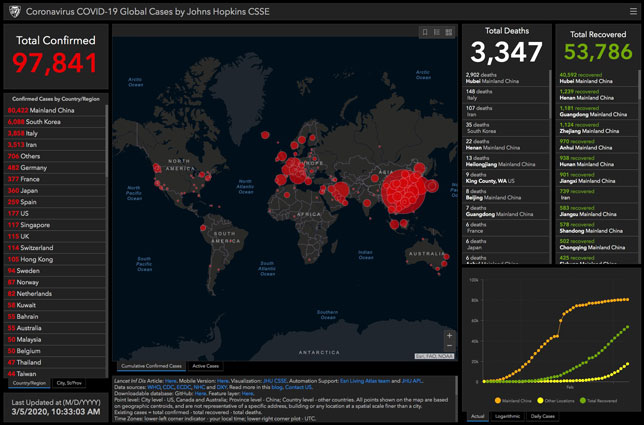Johns Hopkins Dashboard Maps Global Coronavirus Cases

Screen capture of the dashboard as of March 5, 2020
The Center for Systems Science and Engineering at Johns Hopkins University has developed an interactive, web-based dashboard that tracks the status of COVID-19 around the world. The resource provides a visualization of the "location and number of confirmed COVID-19 cases, deaths and recoveries for all affected countries," according to a university blog post.
The primary data source for the tool is DXY, a Chinese platform that "aggregates local media and government reports to provide COVID-19 cumulative case totals in near real-time at the province level in China and country level otherwise," the post explained. Additional data comes from Twitter feeds, online news services and direct communication sent through the dashboard. Johns Hopkins then confirms the case numbers with regional and local health departments.
All data from the dashboard is also freely available in a GitHub repository.
About the Author
Rhea Kelly is editor in chief for Campus Technology, THE Journal, and Spaces4Learning. She can be reached at [email protected].